John Hurrell – 7 March, 2023
It is the willy-nilly bracketing to which I object—not the individual types of described injustice that are quite reasonably referred to, but the simpleminded juxtapositions. The notion of neurodiversity, when set up so that all excluded ‘outsiderism' (in opposition to ‘normality') becomes a glib, convenient consequence of bigotry, I see as a clumsy attempt at political opportunism where the medical is irresponsibly mixed with the non-medical.
Auckland
Ana García Jácome, Bailee Lobb, Devin Ronneberg, Jae Hoon Lee, Kite, Laresa Kosloff, Martin Awa Clarke Langdon, Neuk Collective, Prue Stevenson, ShanjuLab, Simon Yuill, Stefan Kaegi, and The chronicle of <––->.
Who can think, what can think
Curated by Bruce E. Phillips
18 February 2023 - 7 May 2023
For this article I want to mostly concentrate on four artworks that (in isolation) interest me, and ignore the rest, as I question the curatorial premise of neurodiversity as used here. This is the notion of bringing together into a community diverse ways of thinking and behaving that are based on different neurological systems in the brain—the term being invented by the Australian sociologist, Judy Singer—and elucidated and broadened for this exhibition.
I regard its usage as a foolish conflation that in its desire for inclusivity, muddles and mingles a disparate group of unconnected social problems, in an effort to blanketly condemn a plethora of unfair exclusions of fundamental human rights.
These forms of oppression include racism, homophobia, the cruelty of physical ableism and sanism, fear of bright lights and loud noise, the destructive greed of late capitalism, ignorance of autism, cerebral palsy and dyslexia—other difficulties faced by the mentally or physically disadvantaged—and as a sort of metaphorical parallel, human arrogance towards non-human intelligence. Needless to say, I don’t believe that the serious issues articulated here make up a coherent group of sufferers united by any distinguishable commonality detected by neuroscience.
It is the willy-nilly bracketing to which I object—not the individual types of described injustice that are reasonably referred to, but the simpleminded juxtapositions. The notion of neurodiversity, when set up so that all excluded ‘outsiderism’ (in opposition to ‘normality’) becomes a glib, convenient consequence of bigotry, I see as a clumsy attempt at political opportunism where the medical is irresponsibly mixed with the non-medical.
Let’s look at those four works, cut them free of the sweeping vacuous assumptions that sometimes underpin this show, and briefly examine them as separate projects.
Laresa Kosloff, New FuturesTM, 2021 is a hilariously slick, sci-fi satire (see here) on the ferocious market adaptibility of late capitalism, where laboratory-devised, genetically modified personalities are on sale for transplanting into the brains of ambitious executives, and rival gangs of leftwing hackers and rightwing actors simulating hackers fight for consumer control of this corporate-specific product. A marvellously entertaining and conceptually intricate video, this and the Kaegi work are the crowd-pleasers of the exhibition. Both easily replay multiple viewings.
Simon Yuill‘s online and hard-copy text, Stimwork, is a fascinating account of certain tics and bodily mannerisms (repetitive movements and sounds) that sometimes accompany autism, an analysis of head or hand movements and so on that are an instinctive process of evaluating sensory information, a mode of thought in itself. Yuill has created a beautifully written short essay that looks at an obvious subject that is rarely discussed in the open, but is immensely interesting. (It ties in with the Prue Stevenson project.)
Yuill also has a three-part looping billboard work, and a large circular text that encloses a gallery corner/floor and ceiling, but they are a bit dry and minimal (a form of concrete poetry)—not as engaging as his richer expository discussions.
Ana Garcia Jácome is an ardent campaigner for the rights of those with disabilities. Set in Mexico, her disturbing film (see here), It’s like she had never existed, uses family home movies, animated line drawings, sound recordings, documents and photographic archives to tell the tragic story of her ‘invisible’ older aunt who suffered from cerebral palsy and self-inflicted violence, and who died at 28 before the artist was born.
Jácome‘s video is quite a wrenching experience to watch, but nicely put together, using a mixture of visual materials that constantly keep you surprised.
Stefan Kaegi‘s seductive film, Temple du présent — Solo pour Octopus, 2021, treats an octopus moving in a backlit tank as a slowly dancing performer who seems to enjoy interacting bodily with the filmmaker(s). Underwater images filmed from the side are simultaneously projected as backdrops, making the viewing experience more complex. The octopus’s movement is mesmerising, and the possibility is raised that it is coded like a form of language. A link it seems to Stimwork.
Rich in sumptuous cinematography and stirring music, Kaegi’s film showcases the apparent working processes of an octopus’s mind (its curiosity and playfulness) that dwell within several brains. The video fits in with many recent films and books that focus on the remarkable cognitive capabilities of these super-intelligent creatures.
These four works are real treats. Despite their being in a well-meaning but somewhat featherbrained show, it is well worth popping in to Pakuranga to experience them in the Te Tuhi space.
John Hurrell
Recent Comments
Ralph Paine
Hive Brain or Swarm Brain? Seems to me that today’s art institutions are Hive Brain to the max. That is ...


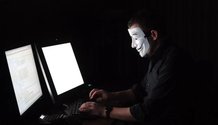
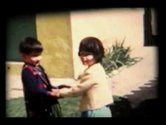

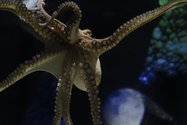
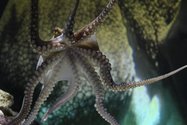
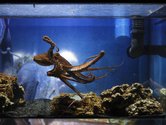
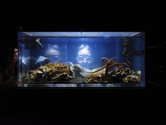
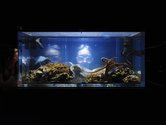
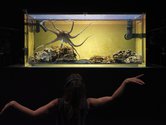
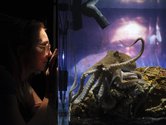
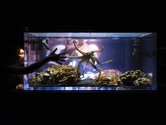

 Two Rooms presents a program of residencies and projects
Two Rooms presents a program of residencies and projects Advertising in this column
Advertising in this column



This Discussion has 1 comment.
Comment
Ralph Paine, 10:03 p.m. 9 March, 2023 #
Hive Brain or Swarm Brain? Seems to me that today’s art institutions are Hive Brain to the max. That is to say, there’s always a regulative and hierarchical grid at work, an apparatus of capture, a homeostatic device productive of the enforced control/preservation of both art-in-general and life-in-general. In this case the regulative grid is named Neurodiversity, a term which comes on kinda Swarm-like, but in the last instance is totally Hive-like.
Diversity, disparity, difference, sameness, otherness, repetition, identity, equality, resemblance … A veritable conceptual-affectual Swarm. Is the socio-functional term Neurodiversity in any way useful in thinking this Swarm vis-à-vis the ethico-aesthetic domain? Not really, because it reduces said concepts-affects into terms applicable only in regards scientific states of affairs, statistically freeze-framed bodies, or nervous systems located in a determinable space/time (at whatever scale).
The ethico-aesthetic domain cannot be figured-forth via the typologies of a neurobiologically determined sociology. When it comes to art and ethics, other factors and problematics are way more operationally important than scientific ones. The conceptual-affectual Swarm (as above) is always already there as the problematic of all political processes, sensory events, ethological situations, ecologies of praxis, umwelts and welts, regions of pathic becoming. The above conceptual-affectual Swarm (plus way more) is a generic set of the qualities/intensities of the ethico-aesthetic real.
In regards art institutions then, why should diversity (neurological or otherwise) be any more important than equality? For example, why should curators be paid more than the people who clean the art institutions’ toilets?
Participate
Register to Participate.
Sign in
Sign in to an existing account.